
There are many programming languages today, and it’s easy to get confused about which one is best to learn first and which one you should know. We all know how important a skill is in today’s world and how demanding it is. We are explaining the top 10 programming languages in this blog. Hopefully, this information makes it easier for you to choose the right language at the end.
1. Python
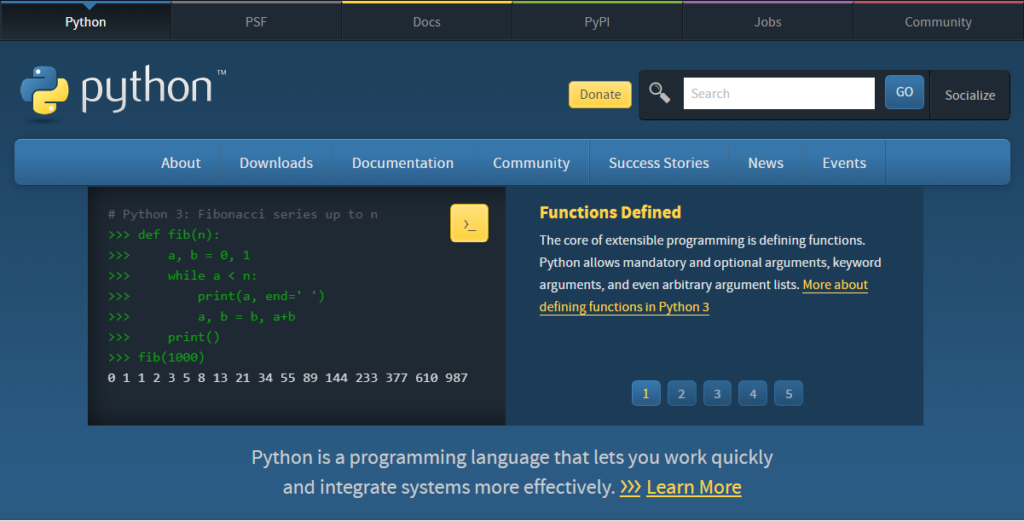
You’re familiar with Python, you often come across discussions about it while scrolling through Twitter or other social media. Sure, it makes you wonder how good Python is. Well, Python is often referred to as a beginner-friendly language due to its simplicity and readability, and that’s true. It is widely used in various domains, including web development, data analysis, artificial intelligence, and automation.
There are many open jobs for Python developers now, and even more are expected in the future. Python lets you work in jobs like data scientist, software engineer, or AI research.
This language is open-source, enabling programmers to modify its source code to fit their needs.
Here are some popular facts about Python you should know:
- Python is one of the most popular programming languages in the world.
- Over 8 million developers use Python. That’s a lot!
- Python is the #1 language used at Google. Many Google services are built with Python.
- It’s also the top language for data science and machine learning.
- Python is easy for beginners to learn. Many schools and universities teach Python now.
- Python works for building all kinds of apps – web, mobile, games, AI, etc.
- Big tech companies like Facebook, Amazon, and Netflix use Python for their systems.
- Python is used by many scientists and researchers in different fields.
- It has a large and helpful community of Python developers around the world.
- Python has many free resources and libraries to make development easier.
There are a lot of free Python courses available online that you can check out and get ideas from.
And there’s also YouTube, where you can find short courses to understand what Python is if you don’t want to go and do a full course. This tutorial can be a good place to start as well.
2. JavaScript
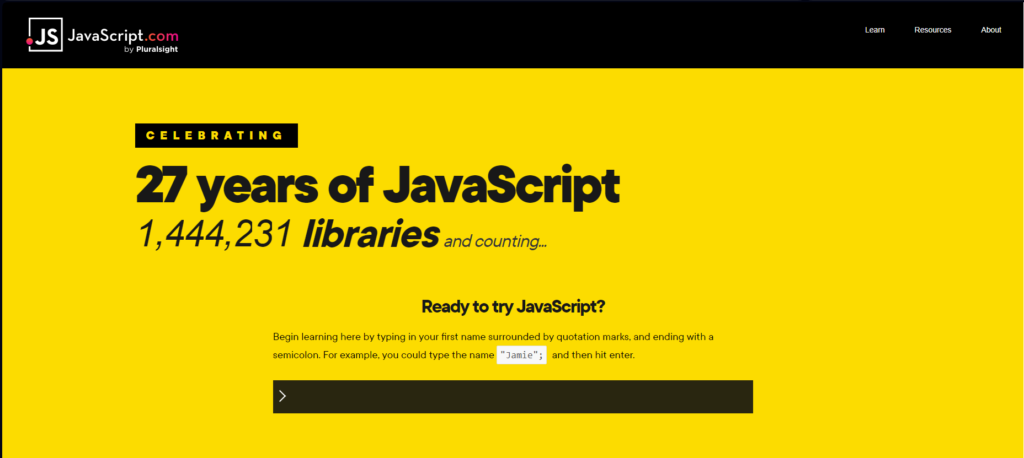
You would be surprised to know JavaScript is the backbone of web development, enabling interactive and dynamic web pages. JavaScript, in addition to HTML and CSS, is the best programming language to learn for front-end web development. 97.8% of all websites use JavaScript for their client-side scripting, making it the most popular language for the cause, of course. Developers widely use it to enhance a site’s interactivity by incorporating dynamic elements on different pages, such as animated graphics, clickable buttons, and scrolling or mouseover effects.
Now, is it easy to learn? Yes, it is a relatively easy language to learn, which makes it great for UI/UX designers, full-stack developers, and software engineers. It could be the perfect choice if you’re planning to become a website developer.
It is also used for server-side scripting (Node.js) and mobile app development (React Native). To dive deeper into JavaScript, visit MDN Web Docs and explore tutorials on freeCodeCamp.
If you are interested also see: Python VS JavaScript – What are the Key Differences
3. Java
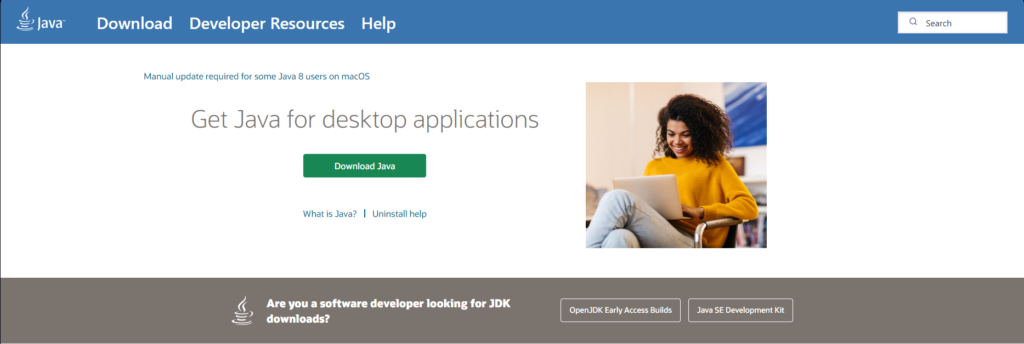
Java is a popular, versatile programming language owned by Oracle. It is a high-level language that allows developers to create all kinds of applications with ease.
Java is known as a “write once, run anywhere” language. This means Java code can run on any operating system, regardless of where it was originally written.
Java has an easy-to-learn syntax similar to real-world tasks and uses an object-oriented structure. New Java frameworks like Spring and Hibernate also simplify application development.
Many programming tasks can utilize Java:
- Software engineering,
- Back-end web development
- Data Science
- Big data, and more.
It is also widely used in financial services due to its robust security features. Java skills are transferable to other languages, making it a great first language to learn for beginners.
Demand for Java developers remains high. Java programmers can qualify for roles like:
- Software Engineer
- Quality Assurance Analyst
- Project Manager
In summary, Java is a versatile, easy-to-learn language used for many applications. It offers transferable skills and high job demand, making it a popular choice for developers.
To enhance your Java skills, visit Oracle’s Java Tutorials and take advantage of free courses on Udemy.
4. C++
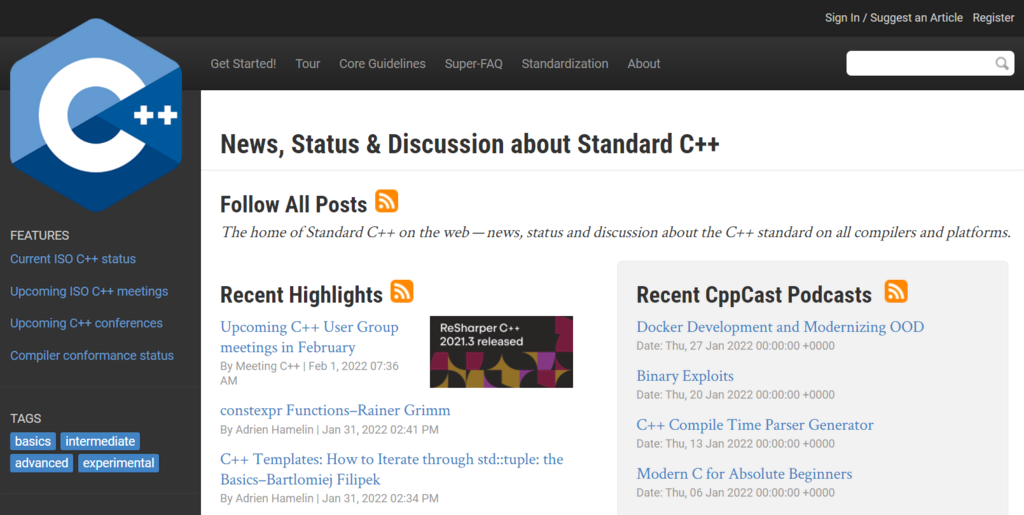
C++ is a powerful programming language that is best for experienced coders. It can be used to build computer programs, operating systems, mobile apps, video games, and more. C++ is challenging for beginners but very versatile. It allows a lot of control and works well across different devices.
Skills learned in C++ transfer easily to other languages.
Some important C++ facts:
- C++ is the 4th most popular language on Stack Overflow and other rankings. Millions of developers use it.
- As an open-source language, C++ is free to use. It is fast and efficient for building large programs.
- Pointers in C++ can cause errors if misused. The object-oriented structure is less efficient than other languages.
- C++ requires manual memory management which adds complexity. This makes it harder for beginners.
Explore C++ further at cplusplus.com and enroll in free courses on Coursera.
5. Ruby

Ruby is renowned for its elegant syntax and focus on simplicity. While many may think that Ruby is dead it isn’t. It is widely used in web development (Ruby on Rails) and scripting. Therefore, if you want to scale your website and web app development skills, learning Ruby can be one of the ways to go.
Can also use it for data analysis and prototyping.
Ruby’s Advantages for Developers
- English-like syntax is easy to learn
- Interpreted general-purpose programming language
- Ruby on Rails (RoR) framework improves security
- RoR lowers maintenance needs
- RoR suitable for full-stack development
- RoR framework brings many benefits
To learn Ruby, visit Ruby-lang.org and access free resources on Codecademy.
6. Swift
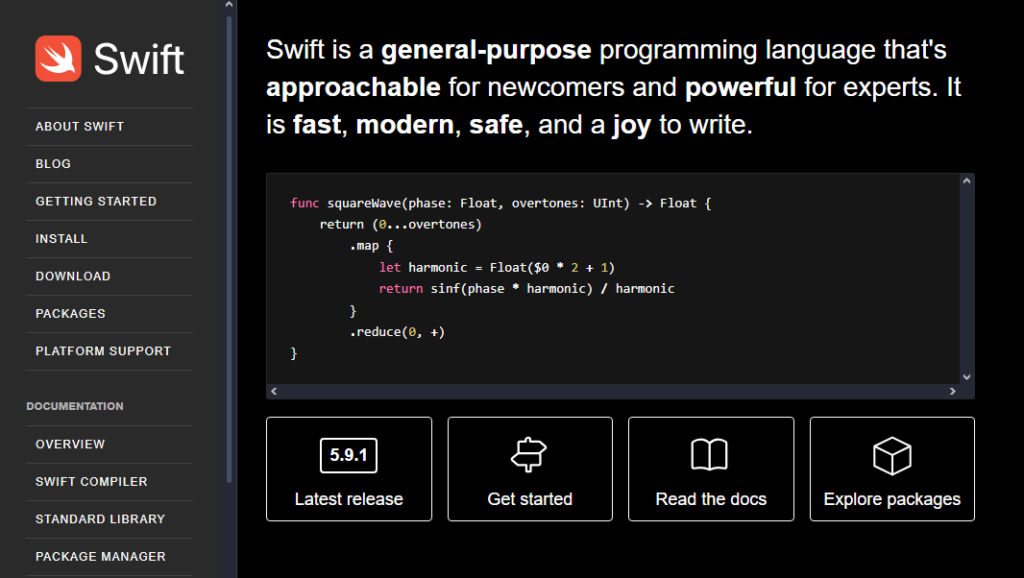
Swift is Apple’s programming language for iOS, macOS, watchOS, and tvOS app development. When it first launched, Swift was an alternative to Objective-C – the primary language for Apple products. You can write faster than Objective-C with Swift. Swift is arguably the best programming language in Apple product development and one of the fastest-growing programming languages available.
It provides a modern and safe environment for building robust applications. Explore the official documentation at Swift.org and take advantage of free courses on Hacking with Swift.
7. Go

Go (Golang) is best for beginners to intermediates. It’s gaining popularity due to its simplicity, strong community support, and efficient concurrency features. Developers commonly use It in building scalable network applications and microservices. If you have knowledge in C or Java it would be easy for you to learn.
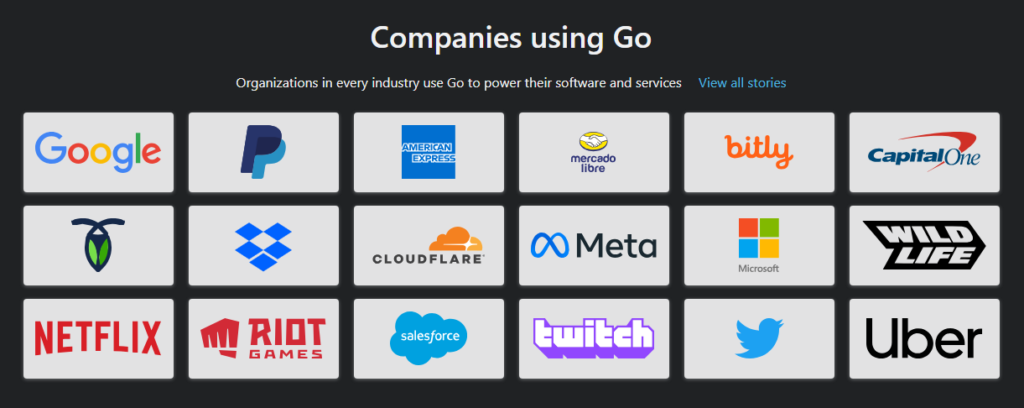
You can use Go for:
- Back-end web development.
- Web applications.
- Machine learning.
- System programming.
- Big data.
To delve into Go programming, visit Golang.org and explore tutorials on Tutorialspoint.
Note: Not ideal for developing complex programs.
8. Rust
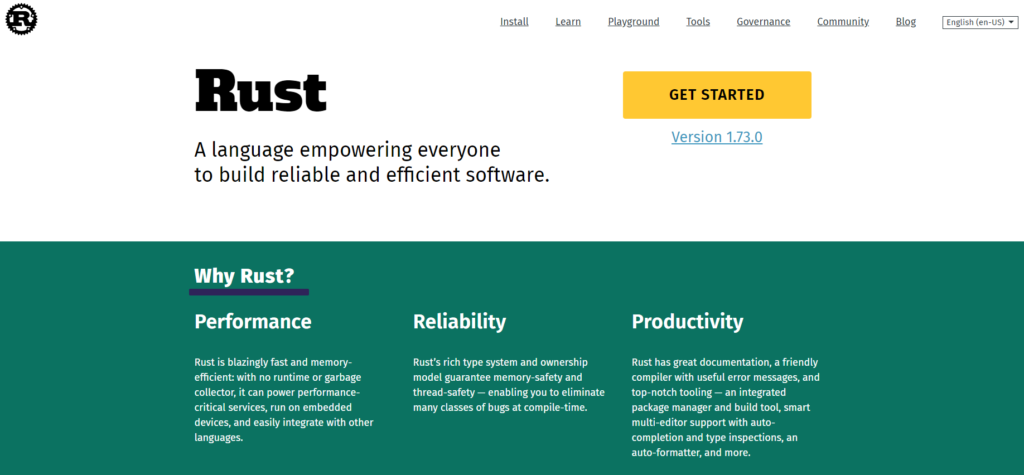
Rust is a systems programming language that runs blazingly fast and prevents segfaults and data races. It is best for experienced programmers who are comfortable with lower-level languages. Rust requires skills in memory management, concurrency, and data structures. It finds application in game development, operating systems, browsers, databases, and other performance-critical applications
Rust’s Growing Popularity
- Loved by over 70% of developers on Stack Overflow surveys
- Currently ranks #16 on the TIOBE index of top languages
- Saw a large increase in adoption since 2016, now with over 1 million programmers using it
- Major companies like Microsoft, Amazon, Google, and Facebook use Rust
- Large open-source community building Rust libraries and tools
Refer to the official documentation at Rust-lang.org and explore resources on Exercism.io.
9. PHP
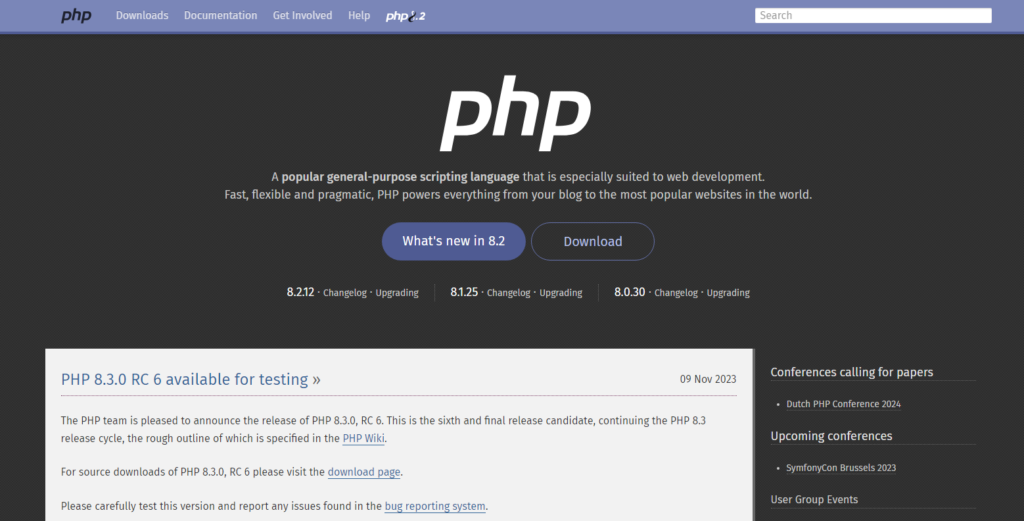
PHP is a popular back-end language that many web developers need to learn first. It powers over 78% of all websites since it is the main language for WordPress.
Skill Requirements: Knowing HTML and CSS can make learning PHP easier for beginners.
Use Cases:
- Web development
- Desktop applications
- Computer programs
PHP’s Widespread Use
- Used by over 37% of Stack Overflow developers
- Ranked 6th most popular language by PYPL
- Ranked 11th by the TIOBE index
PHP can have security issues. Building sites with PHP is slower than in some languages. It has fewer debugging tools. PHP does have some drawbacks like security risks and slower development times.
Want to enhance your PHP skills? Go visit PHP.net and explore tutorials on W3Schools.
10. Kotlin
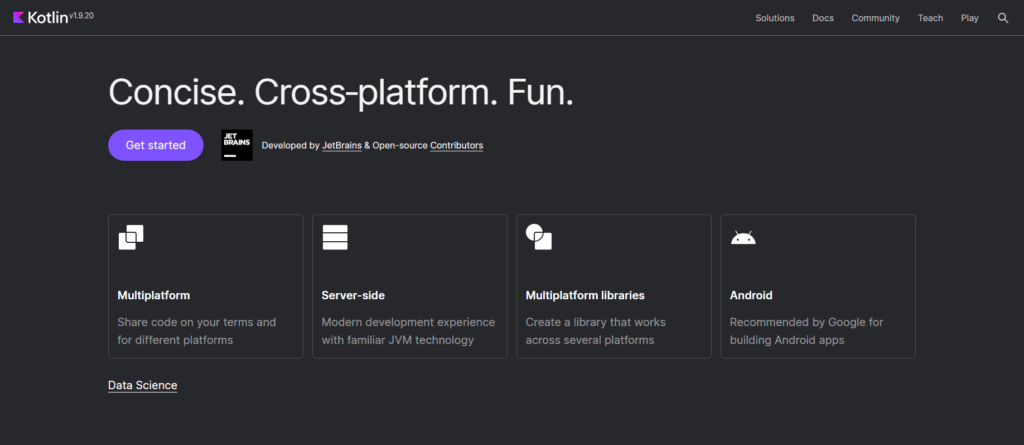
Kotlin is a cross-platform, general-purpose programming language that runs on the Java Virtual Machine. Experienced Java developers seeking a more concise and safer alternative find it best suited. Kotlin requires knowledge of coding fundamentals and object-oriented principles. It finds utility in Android development, web backends, desktop applications, databases, and various other applications.
Kotlin’s Rising Popularity
- Adopted as an official Android development language by Google in 2017.
- Kotlin usage has grown rapidly since its release, with over 60% increase on Stack Overflow.
- Top companies like Pinterest, Uber, Netflix, and Trello use Kotlin.
- Kotlin can compile into JavaScript for front-end web development.
- A large community-driven ecosystem with many open-source Kotlin libraries and tools.
- Also, interoperable with Java code so Kotlin and Java can co-exist in one project.
To get started with Kotlin, refer to the official documentation at Kotlinlang.org and explore tutorials on RayWenderlich.
Conclusion
Remember, the best way to master a programming language is through practice and hands-on projects. Explore the resources provided alongside each language. Moreover, you can check YouTube and other online platforms to deepen your understanding and embark on your coding journey. We hope that this post about the Top 10 Programming Languages will assist you in understanding better and help you choose.
